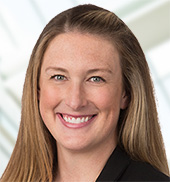As REGucation readers know, the U.S. Department of Education’s “gainful employment” or “GE” regulations require, among other things, that for each GE program an institution offers, it must make certain public disclosures. Institutions are expected to use the Department’s Gainful Employment Disclosure Template to convey these disclosures to prospective students, and to include links to the disclosures in marketing materials and on their websites where the GE programs are mentioned. Effective January 1, 2017, new rules went into effect concerning the content of these disclosures, as well as the means by which they must be distributed.
Separate from this requirement, for any GE program that could be excluded from the federal financial aid programs within a year based on its “debt-to-earnings” performance, institutions must make “student warnings” to both current and prospective students. These student warnings must include specific elements, and must be delivered in accordance with distribution requirements set out in the law. For any GE program that scores a failing final debt-to-earnings rate, an institution typically would have to begin complying with the student warning requirements within 30 days of receiving the final rate determination.
As has been widely reported, the Department last week released Gainful Employment Electronic Announcement #105 - Additional Time for Submission of an Alternate Earnings Appeal and to Comply with Gainful Employment (GE) Disclosure Requirements. In this March 6 guidance, the Department announced that institutions would have additional time to (1) complete alternate earnings appeals and (2) begin complying with the “GE program disclosure requirements.” We offer the following three thoughts in the wake of this announcement.
Point one: Take the guidance at face value
First, we caution schools from reading too much into this announcement, one way or the other. On the one hand, there certainly is evidence that the Department intends to slow down the gainful employment cycle. This administration (along with Congressional leadership) has committed openly to the deregulation of higher education. This recent announcement signals that the new administration is aware, specifically, of the gainful employment regulation, and is willing to take steps to delay upcoming deadlines while it reviews the rule and develops its strategy. It also is worth noting that this time last year, the regulated community was receiving communications related to the upcoming release of completers lists. To date, nothing has been received on this topic, suggesting that the debt-to-earnings cycle may be on pause, as well.
On the other hand, it also is noteworthy that the Department has not acted to suspend enforcement of the entire rule, or to suspend enforcement of any particular element of the rule indefinitely. At least as of this writing, there still will come a time when the disclosures must be made, and alternate earnings appeals are reviewed.
All of this hints that the Department is going to take a deliberate and measured approach to gainful employment. With this thought in mind, we suggest that schools take any guidance or announcements at face value.
Point two: Use the extra time
Second, we suggest that the regulated community use this time wisely. Insofar as federal regulation is concerned, institutions of higher education have been “drinking from the firehose” over the last several years. Despite periodic references to administrative bloat and country club campuses, we know that the vast majority of schools do not have human or capital resources to burn, and have struggled to manage this significantly increased regulatory burden.
While the Department’s recent guidance does not revoke gainful employment, it does offer institutions additional time to mount an alternate earnings appeal (assuming a notice of intent to appeal was timely filed); produce accurate, complete GE disclosures; and evaluate the best way to integrate the disclosures into websites, marketing, and the admissions process. We encourage institutions to take advantage of this breathing room.
Point three: Mind the details
Third, when reviewing guidance that relates to the revocation or delay of select GE requirements, we strongly encourage institutions to pay careful attention to the precise scope of the revocation or delay, to avoid assumptions, and to continue to comply with any requirement that remains in force.
For example, for any GE program that scored a failing final debt-to-earnings rate this past January, the institution offering the program was required to begin making student warnings effective February 8, 2017 (unless the school timely notified the Department of their intent to file an alternate earnings appeal). While Electronic Announcement 105 allows institutions additional time to comply with the “GE program disclosure requirements,” it does not indicate that institutions presently obligated to make student warnings are no longer required to do so. An institution might assume that “student warnings” fall under the general umbrella of “GE program disclosure requirements,” but this would be a mistake.
The law distinguishes between the general disclosure requirements and student warnings. The former, covered in 668.412, is required of every institution, while the latter, addressed at 668.410, is a performance sanction. The Department has always drawn a clear line between the two obligations in its prior guidance, as well, and the March 6 guidance is no exception. Indeed, we have confirmed with the Department that the student warning requirement remains in place and is unaffected by the March 6 guidance.
A calendar
Following is a calendar of the 2017 gainful employment events that have occurred, or for which we have a confirmed date, as well as a tentative date for the dissemination of student warnings for programs with an unsuccessful alternate earnings appeal. We have not included any dates for the next cycle of debt-to-earnings calculations, as the Department has yet to provide information on this topic.
| Date | 2017 Gainful Employment Event |
|---|---|
| January 9 | Release of AY 14-15 Final D/E Rates |
| January 19 | Release of 2017 GE Disclosure Template |
| January 23 | Deadline to submit Notice of Intent to Appeal (Alternate Earnings Survey) |
| February 8 | Deadline to begin disseminating D/E Student Warning Disclosures for programs with failing AY 14-15 Final D/E Rates (unless notice of intent to submit alternate earnings appeal was timely filed) |
| July 1 | Deadline to (1) submit Alternate Earnings Appeal and (2) implement 2017 GE Disclosure Template |
| July/August (tentative) | Deadline to begin disseminating D/E Student Warning Disclosures for programs that did not file a successful Alternate Earnings Appeal |
A webinar
Finally, we invite interested parties to tune in next week when we present an advance-level webinar on these and related GE topics. The 90-minute session, titled “Gainful Employment Disclosures and Student Warnings,” will be presented on Thursday, March 23, and will focus on the 2017 GE Disclosure Template, the student warning requirements, and more generally what’s happening inside the Beltway with regard to the gainful employment rule.
Aaron Lacey is a partner in Thompson Coburn’s Higher Education practice, and editorial director of REGucation, the firm’s higher education blog. You can find Aaron on Twitter (@HigherEdCounsel) and LinkedIn, and reach him at (314) 552-6405 or alacey@thompsoncoburn.com.
















